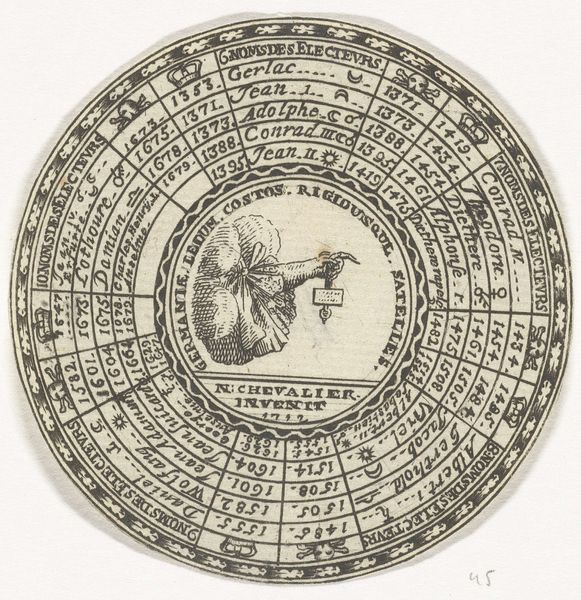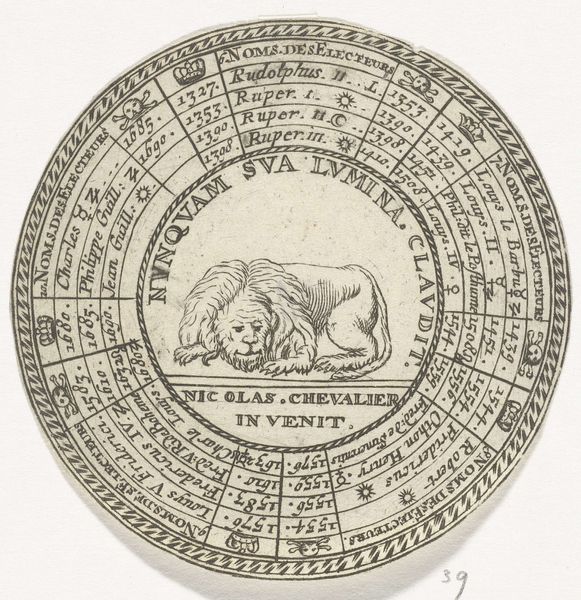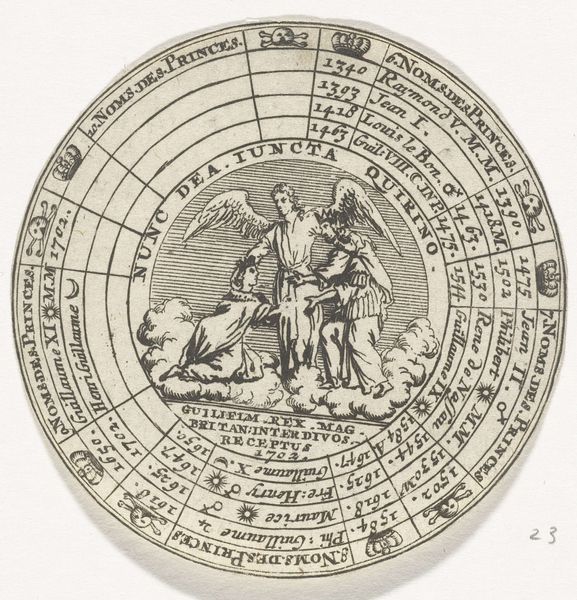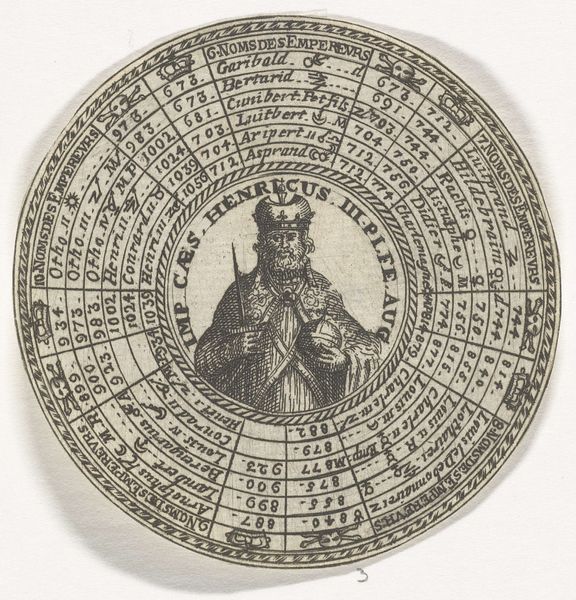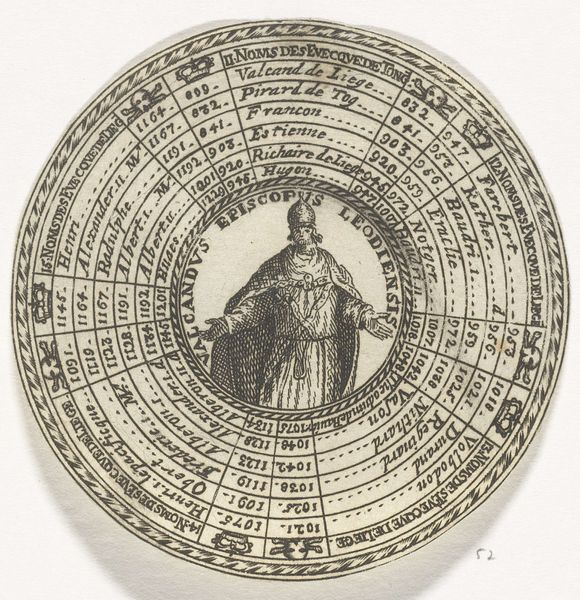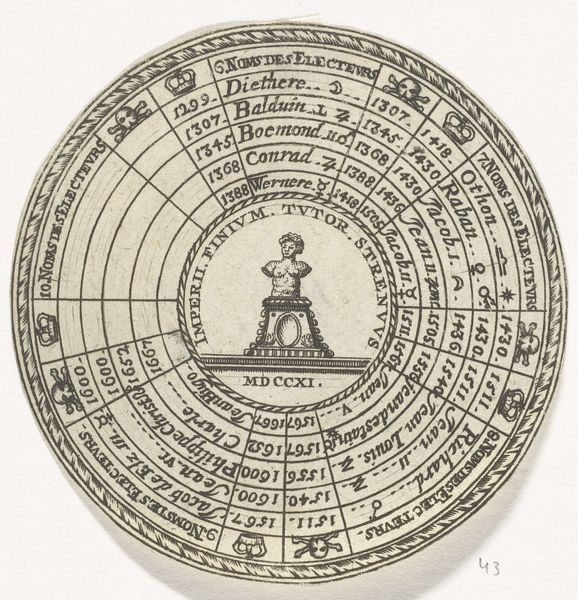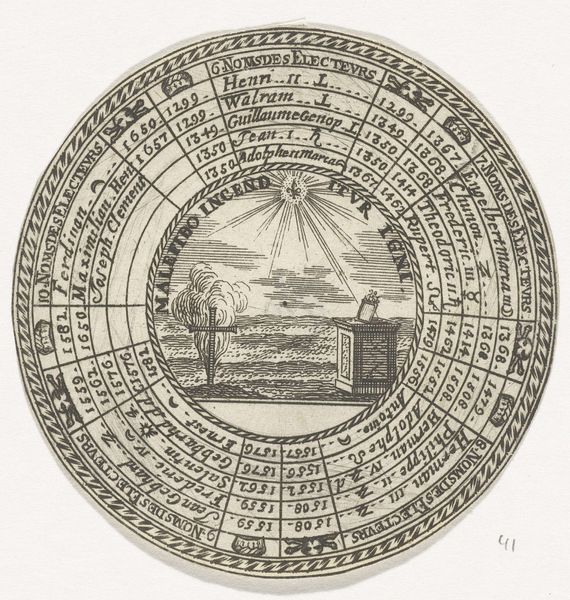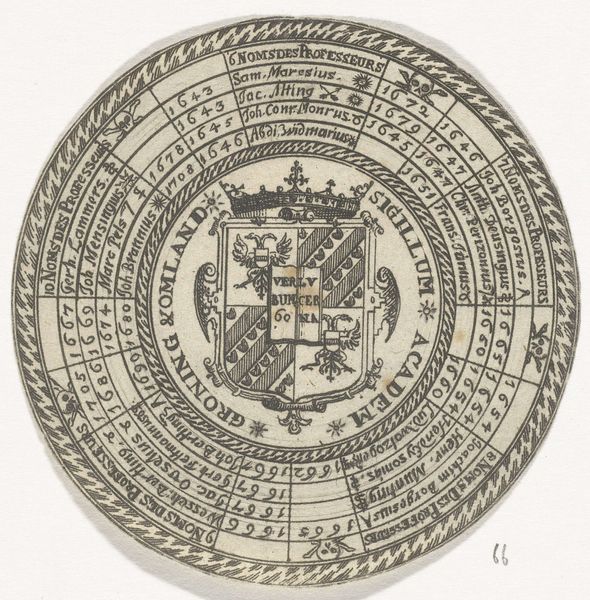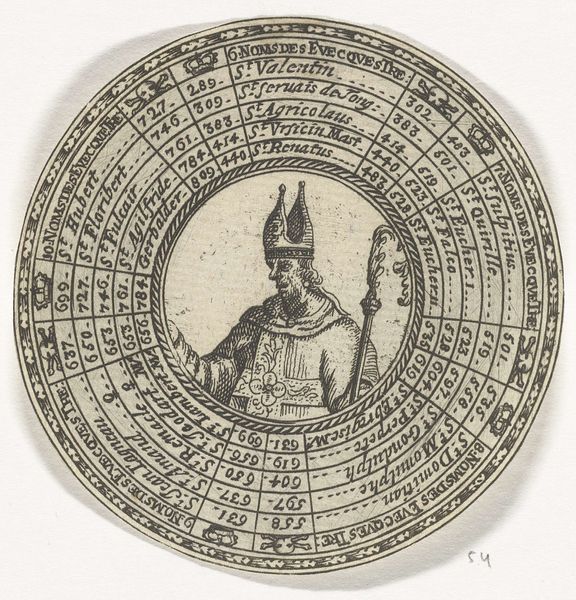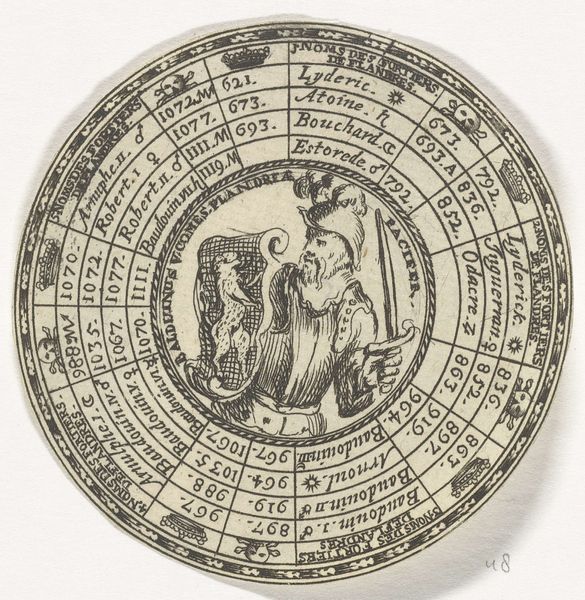
Penning met het portret van bisschop Jozef Klemens en de namen van de bisschoppen van Luik 1685 - 1720
0:00
0:00
print, engraving
#
portrait
#
baroque
# print
#
old engraving style
#
geometric
#
history-painting
#
academic-art
#
engraving
#
intricate and detailed
Copyright: Rijks Museum: Open Domain
Curator: Looking at this circular engraving, created anonymously between 1685 and 1720, titled "Penning met het portret van bisschop Jozef Klemens en de namen van de bisschoppen van Luik" – which translates to "Medal with the portrait of Bishop Joseph Clemens and the names of the bishops of Liège" – my immediate thought is that it is incredibly busy, almost overwhelmingly detailed. The geometric layout creates a visual cacophony. Editor: Exactly! That complexity reflects the intersection of political and religious power structures during that era. The visual is carefully crafted to broadcast status and heritage. Think about how portraits of power, especially within the church, have always worked. Curator: The academic approach with its meticulous rendering of Jozef Klemens, encircled by text naming previous bishops, emphasizes lineage. This isn’t just a portrait; it's an assertion of legitimacy rooted in history and divine right. It is clearly important who is in and who is out in the scope of representation of the bishops of Liege. Editor: Absolutely, the use of an old engraving style also places it deliberately within a longer visual tradition of religious and political communication. What power dynamics were in play during the crafting and distributing this artwork? Who had access to it? What audiences were the artist and patrons aiming to sway or impress? Curator: Well, printmaking made it reproducible, thus enabling dissemination across a wider social strata. Despite that accessibility, literacy would restrict interpretation among many potential viewers of this historical object. I’d ask about whose narratives about power and legacy were either highlighted or actively erased. The very structure – names in a circle emanating from a central portrait – encodes how that society hierarchized power through representation. Editor: So, what could be the politics of display at play today if we bring the context back to the public today? Curator: The context is important in that these visual cues have the capacity to serve as tools that underscore the values, biases, and inequalities perpetuated in institutional collecting practices and historical records. Overall it asks who controls history, controls not only the present and future but influences access and control to these means. Editor: Very good. This has indeed deepened my own appreciation of its message. Thank you.
Comments
No comments
Be the first to comment and join the conversation on the ultimate creative platform.

